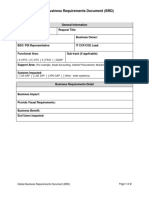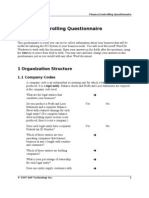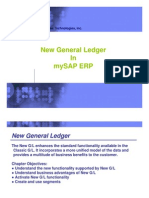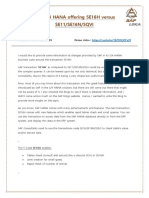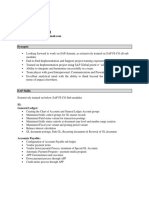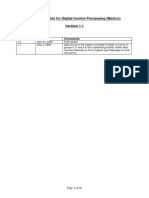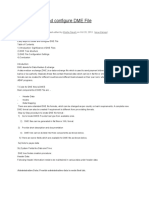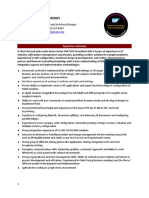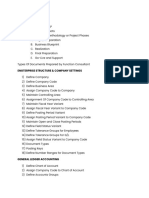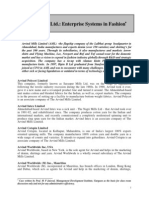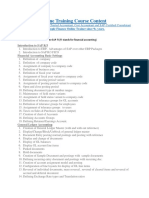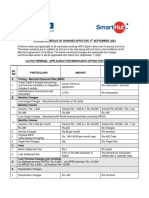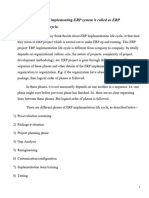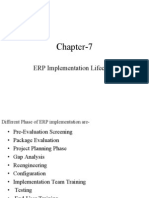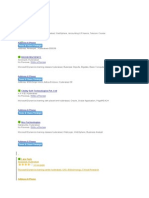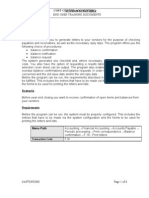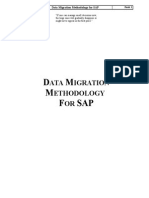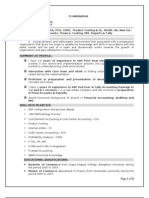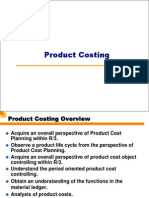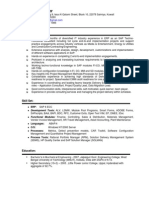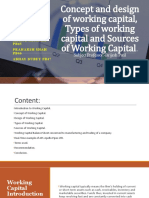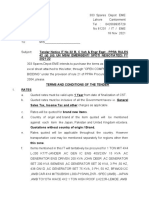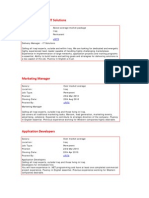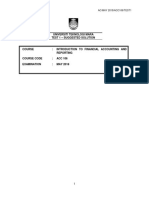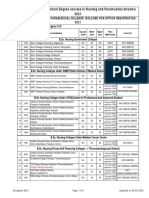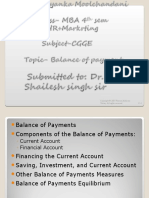SAP IMPLEMENTATION
LIFE CYCLE
PRIYA PANGAM
�Enterprise resource
planning
Enterprise resource planning (ERP) covers the
techniques and the methods employed for the
integrated management of businesses as a whole from
the viewpoint of the efficient use of the management
resources, to improve the efficiency of an enterprise.
ERP packages are integrated software packages that
support the above ERP concepts.
�ERP LIFE CYCLE
ERP lifecycle highlights the different stages in
implementation of an ERP.
The ERP implementation project goes through
the different phases of the ERP lifecycle
implementation.
�Different phases of ERP
1.
2.
3.
4.
5.
6.
7.
8.
9.
10.
11.
Pre-evaluation Screening
Package Evaluation
Project Planning phase
GAP analysis
Reengineering
Configuration
Implementation Team Training
Testing
Going Live
End-User Training
Post Implementation
�Pre-selection Process
Package Evaluation
Project Planning
Gap Analysis
Reengineering
Implementation Team
Training
Testing
Going Live
Post implementation
Phase
ERP implementation Life Cycle
Configuration
End- user Training
�Pre evaluation screening and
Package Evaluation
Screening eliminates the packages that
are not at all suitable for the companys
business processes and selecting
package suitable for our business
process.
�Phase I
Project Preparation
�Project Planning
In this phase the implementation process is
designed.
In this phase the details of how to go about the
implementation are decided.
Time schedules ,deadlines etc for the project
are decided.
Roles are identified and the responsibilities are
assigned.
�Project Planning
(cont.)
The implementation team members are
selected and the task allocation is done.
This phase decides WHEN to begin the project,
HOW to do it, and WHEN it should be
completed.
This phase is usually carried out by a
committee constituted of the team leaders of
each implementation group.
�Gap Analysis
This is the most crucial phase in the ERP
implementation.
This is the process through which the
companies create a complete model of where
they are now, and in which direction will they
opt in the future.
The model helps the company to anticipate
and cover any functional gaps.
�Gap Analysis
(cont.)
It has been estimated that even a best ERP
package, custom tailored to meet the
companys needs, meets only 80 % of the
companys functional requirements. The
remaining 20 % of these requirements present
problematic issues for the companys BPR.
�Re-engineering
One of the tremendous benefits of an ERP
implementation project is that it represents
an opportunity to make necessary process or
workflow changes. While change is usually
hard, keep the big picture in mind and
embrace changes that can help you achieve
breakthrough improvements.
�Phase II
Business Blueprint
�Business Blueprint
It is detailed document of
companys requirement along with
solutions provided by consultant .
As-Is, To-Be and Gap analysis is
documented.
�Phase III
Realization
�Realization
Actual customization needs are
chalked out and actual work starts.
�Team Training
Takes place along with the process of
implementation.
Company trains its employees to implement
ERP first and then the smooth functioning
of the ERP.
Employee becomes self sufficient to
implement the software after the vendors
and consultant have finished their role.
�Phase IV
Final Preparation
�Testing
This phase is performed to find the
weak link so that it can be rectified
before its implementation.
�End User Training
In this phase the actual users of the
system are identified and trained on
HOW to use the system.
This training is very important because
the success of the ERP system lies in
the hands of the End-users.
This makes this phase very crucial.
�Phase V
Go -Live
�Going Live
The work is complete, data conversion is
done, databases are up and running, the
configuration is complete & testing is
done.
The system is officially proclaimed.
Once the system is live the old system is
removed and the new system is used for
doing the business.
�Post Implementation
This is the maintenance phase.
Employees who are trained enough to
handle problems which crops up time to
time.
The post implementation will need a
different set of roles and skills than those
with less integrated systems.
�Post Implementation
(Cont.)
An organization can get the
maximum value of these inputs if it
successfully adopts and effectively
uses the system.
�Thank You!!!!
